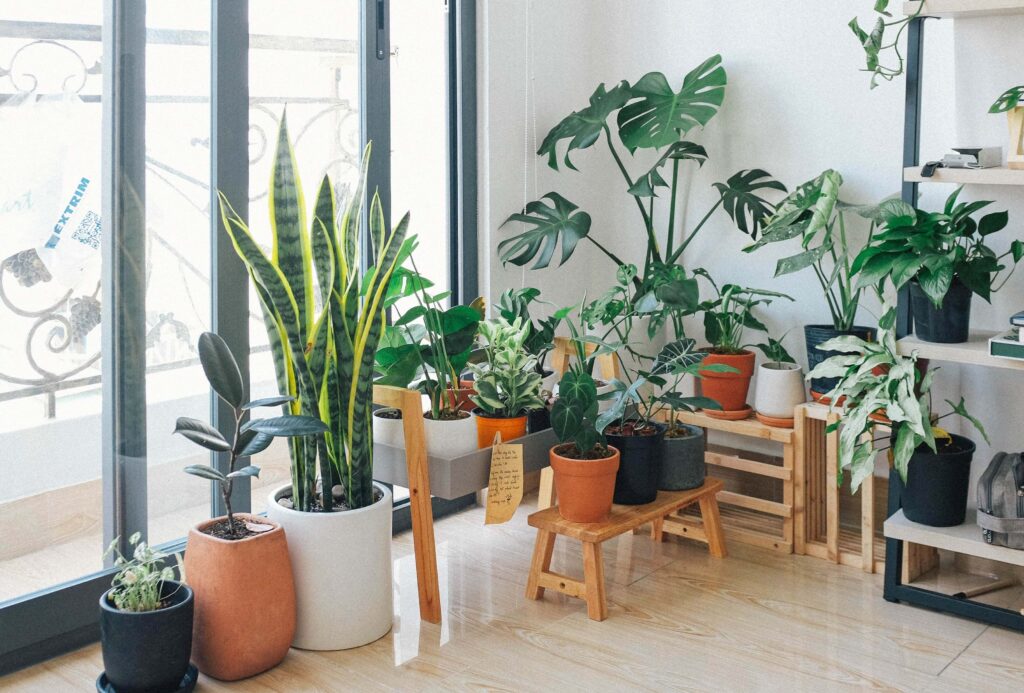Cleaning the home every day is an important task. What if I told you that the regular household cleaners we use every day do more harm than good? They are toxic to us and our planet.
Every day we use chemical cleaners for washing clothes, dishwashing, bathroom cleaning, floor cleaning, drain cleaning, kitchen cleaning, etc., putting ourselves and our planet at greater risk.
Most cleaning products produce VOCs (volatile organic compounds), which are gases emitted into the air that can cause cancer, eye, throat, and lung irritation. According to the environmental working group, 53% of household cleaners contain harmful chemicals that can cause lung damage. 22% of cleaners can cause asthma in healthy individuals.
The most commonly present chemicals are.
Detergents, Formaldehyde, ammonia, bleach, LAS, 1,4-dioxane, NPEs, Phosphates, Boric acid, etc.
These chemicals can cause cancer, asthma, eye irritation, skin irritation, allergies, migraines, and many more.
What can we do to reduce the use of these harmful chemicals?
We can make eco-friendly cleaners that are safe for us and our planet.
That is a bioenzyme. How to make bioenzymes easily at home without any harmful chemicals
What is a bio enzyme?
Bio enzyme is fermented fruit juice. It’s made of fruit peels, jaggery, and water. Which contains enzymes that help to break down fats, dirt, food, and soils from surfaces.
It is also called garbage enzyme, fermented fruit juice, bio enzyme, and kitchen waste enzyme.
How to make bio enzyme easily at home

It needs only three ingredients.
How to make bio enzyme step by step.
Measurements
1:3:10:15 percent of jaggery: citrus peels: water: volume of a water bottle.
Method: 1. with yeast
Take 1:3:10 amount of jaggery: citrus peels: water and take 1/4 teaspoon of yeast, and add all of them in a plastic bottle.
Label the date.
Release the gas once or a few times a day.
At the end of the 30 days, the bio enzyme is ready to use.
Strain it into another bottle.
For the remaining fruit peels, grind them in 1 liter of water to make a thick cleaner. That can be used for toilet cleaning, dishwashing, and areas that are hard to clean.
Method: 2. without yeast
Measurements 1:3:10:15 percent of jaggery: citrus peels: Water: volume of a water bottle.
But without yeast. It will take 90 days for fermentation.
For the first 30 days, release the gas every day after that for 60 days, once a week.
After 90 days, strain the liquid into another bottle, grind the remaining pulp, and use it for cleaning the toilet bowl.
Method: 3. with a starter culture.
Measurements 1:3:10:15 percent of jaggery: citrus peels: Water: volume of a water bottle.
For this, add 1 teaspoon of starter culture. (the thick cleaner from the previous batch).
The first 15 days release the gases every day, and another 30 days release the gases on alternative days.
This batch with the starter culture will be ready in 45 days.
How do we know that Bio enzyme is ready to use?
Once all the peels have settled down,. Sometimes we can see white yeast on top. If we use it, it should clean the surface.
Notes:
- I recommend using a plastic bottle because the fermentation process releases gases, so it is not recommended to use a glass jar because it can explode due to the pressure built inside.
- You can use any type of jaggery Black, brown, powdered, rounded, or block. It is better not to use white sugar.
- Do not fill the bottle to the brim. Leave the space for gases to accumulate on top.
- Keep the container tightly closed to keep it away from flies.
- Do not use onion or garlic peels for making household cleaner; they do not smell good.
- For agricultural use, you can make use of any fruit, vegetable, or flower to make enzymes.
- Make sure to burp the bottle a few times every day.
- If you see green mold on the surface, it means that it got contaminated (spoiled) and should be thrown away.
- We can use citrus fruit peels like orange, lemon, sweet lime, pineapple, tangerine, desert lime, star fruit, pomelo, and bergamot orange.
What purposes bio enzyme can be used for?
Bio-enzymes can be used as cleaners, plant fertilizer, personal care products, pesticides, insect repellents, room fresheners, Drain cleaners, etc.
How do I use enzyme cleaner?
- Floor cleaning: For floor cleaning, add 50 ml of cleaner to 4 to 5 liters of water and mop the floor.
- Toilet cleaning. Use thick cleaner for toilet cleaning Apply a thick layer to the walls of the toilet, scrub, and let it sit for half an hour, then flush.
- Bathroom cleaning. Clean the bathroom with a 1:10 ratio of cleaner and water.
- Kitchen cleaning. You can clean anything in the kitchen by diluting cleaner in water at a 1:1 ratio.
- Dish cleaning. Use a thick cleaner for washing dishes by adding some soap nuts enzyme.
- Laundry cleaning. Hand wash, add 100–150 ml to half a bucket of water, soak clothes for half an hour, then wash. For the washing machine, pour 200 ml of a clear enzyme into the dispenser and do a full load of laundry.
- Drain cleaning. Pour baking soda and hot water, then put enzyme cleaner in it, leave it for some time, and again pour some hot water.
- Descaling Use the thick cleaner for salt scales, apply it to the surface, leave it for half an hour, then wipe it.
Bio enzyme benefits.
- 1. It is natural and eco-friendly.
- 2. Helps in residual cleaning (once it is on the surface, the length of time it stays until it breaks down the dirt and soils).
- 3. Cost-effective.
- 4. You can easily make it at home.
- 5. We can save natural resources from being contaminated by harmful chemicals.
- 6. It can be made with a few ingredients.
- 7. They are naturally anti-bacterial and antifungal.
- 8. You can save waste from going into landfills.
- 9. One bio enzyme can be used as a surface cleaner, bathroom cleaner, Kitchen cleaner, Dish cleaner, Drain cleaner, Car wash, Pet wash, laundry cleaner, etc.
- 10. Chemical cleaners contaminate water and soil.
- 11. Chemical cleaners are harmful to humans and animals. If inhaled or ingested, it can be fatal.
- 12. Chemical cleaners can irritate the eyes and cause breathing issues.
How to make bio enzyme for plants?
Measurements 1:3:10:15 percent of jaggery: citrus peels: Water: volume of a water bottle.
It will take 90 days for fermentation.
For the first 30 days, release the gas every day after that for 60 days, once a week.
After 90 days, strain the liquid into another bottle.
For making enzymes for plants, make use of other fruits and vegetables, which can add more nutrients for plants.
How to use bio enzyme for plants.
Make Bio enzyme by using vegetable and fruit peels; it acts as fertilizer for the plants.
Dilute it in water and use it for plants.
Use citrus enzyme as a pesticide for plants.
1 ml in 1 liter of water.

Benefits Bio enzyme for plants.
It can be used by plants as fertilizer.
It can be used as an herbicide or pesticide.
It gives nutrients to the plants.
Now we have learned how to make bio enzyme easily at home.
Let’s make and start using this versatile cleaner for household cleaning. And for our gardens. To save ourselves and our mother earth from harmful chemicals. One step towards a sustainable journey. practice 3r’s in your daily life.
Resources
Image by Freepik, pexels.com
What are the ingredients used in making enzymes?
We just need 3 ingredients in the proportion of 1:3:10 percent of jaggery: citrus peels and water fermented for 90 days.
Can we make enzymes at home?
We just need 3 ingredients in the proportion of 1:3:10 percent of jaggery: citrus peels and water fermented for 90 days.
Bio enzyme uses in agriculture.
It can be used for plants as fertilizer, herbicide, and pesticide.
It improves soil health and fertility.
They do not contaminate soil or water.
It helps in adjusting the pH of the soil.
Use 1:100 for foliar spray. 1:50 for roots.
Am Jeenath is an engineer in biotech with a diploma in clinical research. I am the mother of a son. And I love helping people live sustainably. I educate people on sustainable living and share sustainability tips, ideas, brands, and DIYs.


Your article helped me a lot, is there any more related content? Thanks!